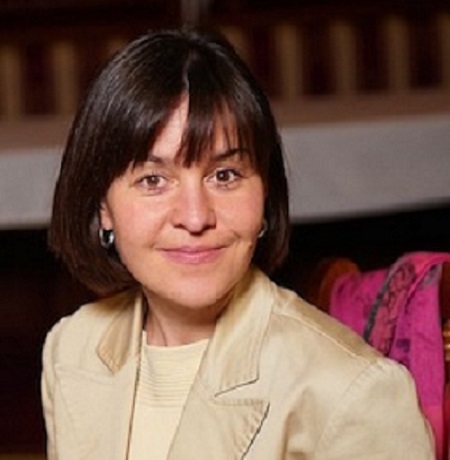
Posted on 12th December 2014
Project Partner Introduction: Natasha Stash at TU/e
Hi, I am Natalia Stash from Eindhoven University of Technology (TU/e) in the Netherlands. I am a lecturer, researcher and developer at the Department of Mathematics and Computer Science. I am also a student counsellor for students following the Web Science undergraduate degree course at the TU/e.
TU/e is the technical partner in the project, primarily responsible for delivering the technology to support students with autism. We are planning to build this technology on the basis of existing research, conducted by our Web Engineering group.
One of the areas in which our group specialises is automatic creation of personalised Web experiences. In the past few years we have developed several tools for providing personalised access to online information. We have designed tools both for information in general and online educational courses in particular.
My PhD research was based on a first generation tool of this type. In my thesis, I presented examples of adapting online learning environments to different cognitive/learning styles (CS/LS). To identify CS/LS that can be applied in pedagogy, and more specifically in online learning environments, I did a thorough review of the literature on cognitive psychology.
Using our tool I implemented scenarios for three dimensions of CS/LS:
- visual versus verbal,
- global versus analytic (or sequential), and
- active versus reflective.
I showed types of adaptation that could be used to accommodate for variation within these three dimensions. For the cases in which the learner does not know what his/her CS/LS are, I also implemented scenarios for identifying those. In the latter scenarios, the tool monitors how the learner interacts with the application:
- which media types (s)he prefers to choose over the others when several types (e.g. images, text, audio) are available,
- how (s)he navigates through the application (e.g. bottom-up versus top-down), and
- in which sequence (s)he performs various learning activities (e.g. studying the theory, looking through examples and additional explanations, working on an assignment).
Based on the inferred patterns in learner behaviour, the tool chooses an appropriate type of further adaptation.
The tools developed by our group can be reused in the Autism&Uni project, as it moves to the next stage. These tools can provide adaptation, comparable to the way we have adapted online environments to learning styles – only in this scenario, we will consider the specific needs of people with autism.
We have the technology; what we need for the next stage of the project is knowledge about the teaching/learning strategies that work best for people with autism. This knowledge should be translated into exact instructions on how the interactive application should behave, allowing us to incorporate this specific behaviour into our system.
For further information, see my PhD thesis on Incorporating Cognitive/Learning Styles in a General-Purpose Adaptive Hypermedia System




Dear David,
I am very sorry for the late response…
“Could a gradual change-over of preferences be programmed in this system? I’m thinking here of a system that might be able to use more of the student’s preferences at first and then make gradual changes to the frequency of use of these preferences – in a way, mirroring the scaffolding technique that Bruner developed on the basis of Vygotsky’s work.”
That should indeed be possible. Rules should be defined instructing the system how to behave, e.g. until certain condition holds the system would apply student’s preferences and then start applying gradual changes.
“It is also possible to let the system trace the preferences of the learner without asking him to set those explicitly through the registration form and as soon as the system infers a specific preference it can start applying the strategy that is opposite of this preference.”
That seems to put into the system the sort of flexibility that I’d anticipate it to need. Could a gradual change-over of preferences be programmed in this system? I’m thinking here of a system that might be able to use more of the student’s preferences at first and then make gradual changes to the frequency of use of these preferences – in a way, mirroring the scaffolding technique that Bruner developed on the basis of Vygotsky’s work.
Dear David,
Thank you for your comment on my post.
When the learner starts working with the application, through the registration form he can apply settings that are opposite of his actual preferences, e.g. say that he is verbal, while in reality he is visual, to work on improving his verbal skills.
It is also possible to let the system trace the preferences of the learner without asking him to set those explicitly through the registration form and as soon as the system infers a specific preference it can start applying the strategy that is opposite of this preference.
“Using our tool I implemented scenarios for three dimensions of CS/LS: visual versus verbal; global versus analytic (or sequential); and active versus reflective.”
I haven’t had chance to really read your doctoral thesis yet, so I’m not really sure what you did regarding the evaluation of learning styles. However, my issue here is that – even if there were some preferences for ways of learning that had real effects on educational outcomes – would it not serve the student better if s/he were to develop the skills associated with the non-preferred styles? I ask this, since not everything can be set up per the exact needs of the autistic student (much as one might wish that it could). Much as I’m in favour of reducing the cognitive load on autistic students (of which I myself was one!), I think that it is rather important that we develop skills that we can use reasonably effectively in educational circumstances that fail to favour our preferred learning styles.
David N. Andrews
B. A.-equiv., M. Ed., C. P. S. E.
Psychologist (Teaching, Learning & Development) – UK
Psycho-educational Consultant – RoW
Kotka, Finland